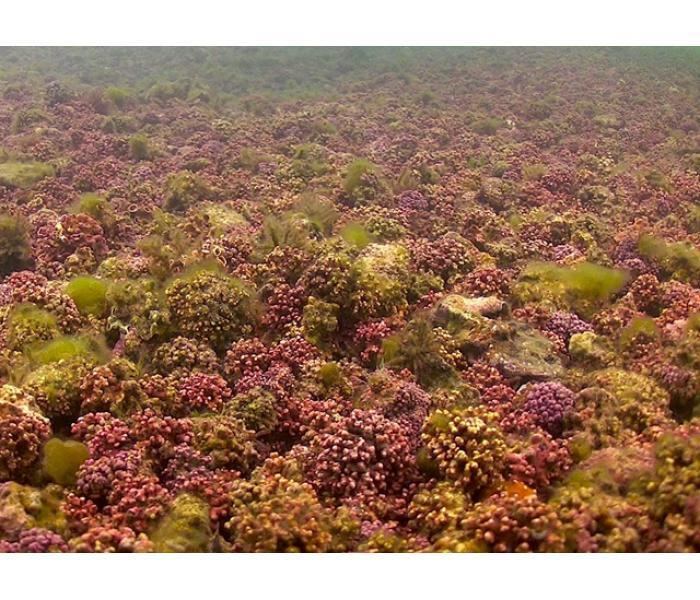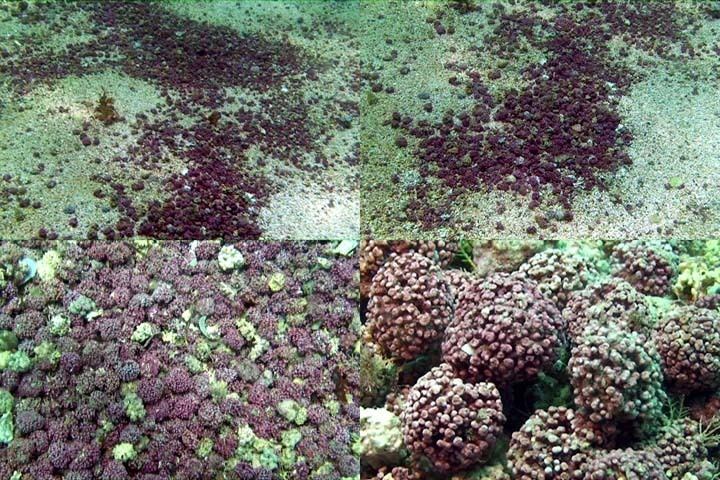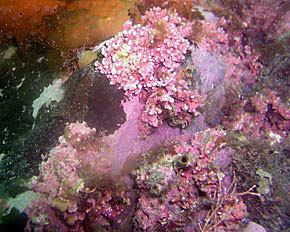Domain Eukaryota | Division Rhodophyta | |
Similar Lithothamnion, Lithophyllum, Coralline algae, Phymatolithon, Mesophyllum | ||
Rhodoliths are colorful, unattached, branching, crustose benthic marine red algae that resemble coral. Rhodolith beds create biogenic habitat for diverse benthic communities. Common rhodolith species include Lithophyllum margaritae, Lithothamnion muellerii, and Neogoniolithon trichotomum.
Contents

The rhodolithic growth habit has been attained by a number of unrelated coralline red algae, organisms that deposit calcium carbonate within their cell walls to form hard structures that closely resemble beds of coral. Unlike coral, rhodoliths do not attach themselves to the rocky seabed. Rather, they roll like tumbleweeds along the seafloor until they become too large in size to be mobilised by the prevailing wave and current regime. They may then become incorporated into a semi-continuous algal mat. While corals are animals that are both autotrophic (photosynthesize via their symbionts) or heterotrophic (filter plankton from the water for food), rhodoliths produce energy solely through photosynthesis (i.e. they can only grow and survive in the shallow photic zone of the ocean). Scientists believe rhodoliths have been present in the world's oceans since at least the Eocene epoch, some 55 million years ago.

Habitat

Rhodolith beds have been found throughout the world's oceans, including in the Arctic near Greenland, off eastern Australia and in waters off British Columbia, Canada. Globally, rhodoliths fill an important niche in the marine ecosystem, serving as a transition habitat between rocky areas and barren, sandy areas. Rhodoliths provide a stable and three-dimensional habitat onto which a wide variety of species can attach, including other algae, commercial species such as clams and scallops, and true corals. Living rhodolith beds are widely distributed throughout the Gulf of California, Mexico. Rhodoliths are resilient to a variety of environmental disturbances, but can be severely impacted by harvesting of commercial species.

In shallow water and high-energy environments, rhodoliths are typically mounded, thick or unbranched; branching is also rarer in deeper water, and most profuse in tropical, mid-depth waters.
Geological significance

Rhodoliths are a common feature of modern and ancient carbonate shelves worldwide. Rhodolith communities contribute significantly to the global calcium carbonate budget, and fossil rhodoliths are commonly used to obtain paleoecologic and paleoclimatic information. Under the right circumstances, rhodoliths can be the main carbonate sediment producers, often forming rudstone or floatstone beds consisting of large pieces of rhodoliths in grainy matrix.

